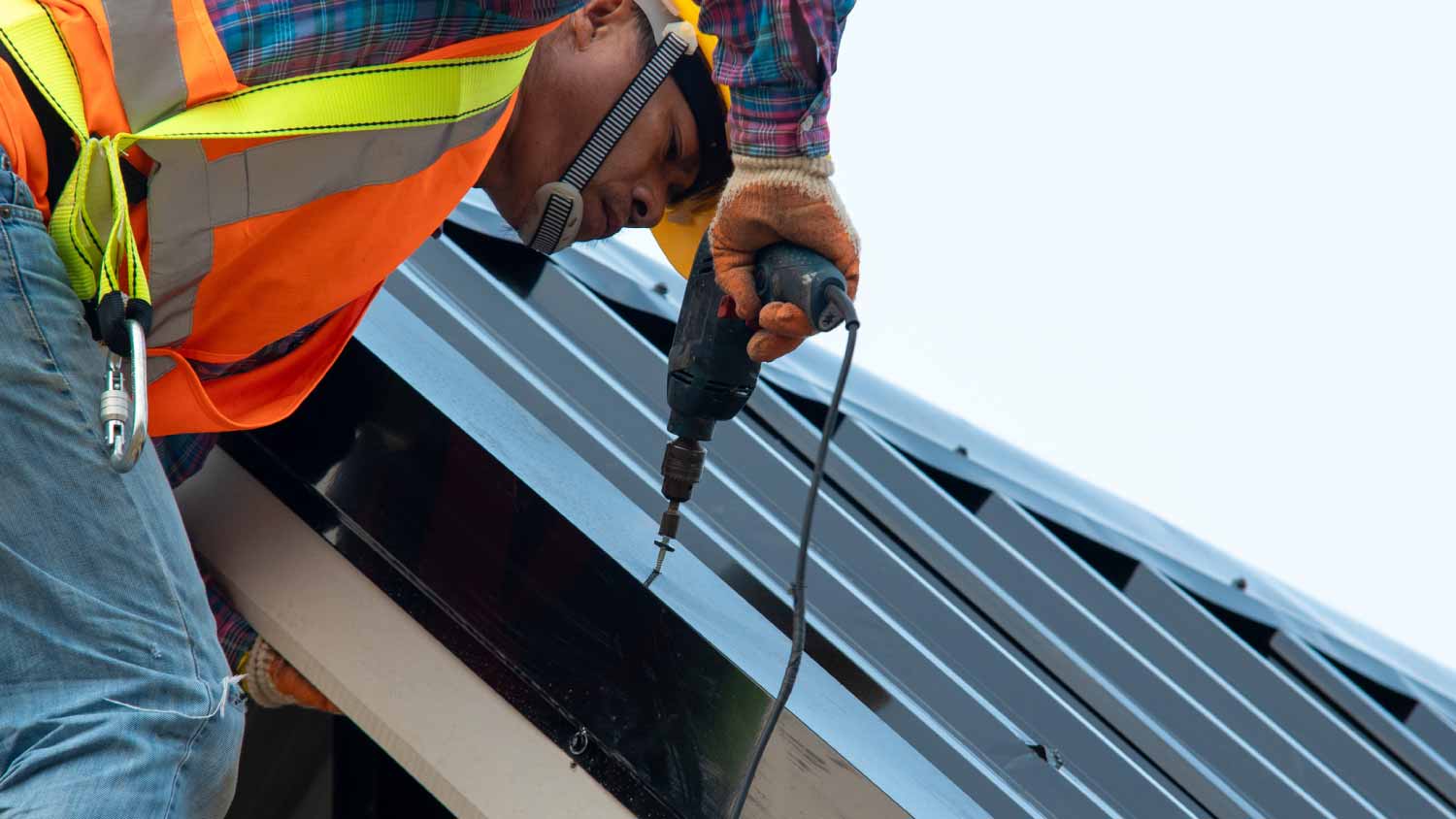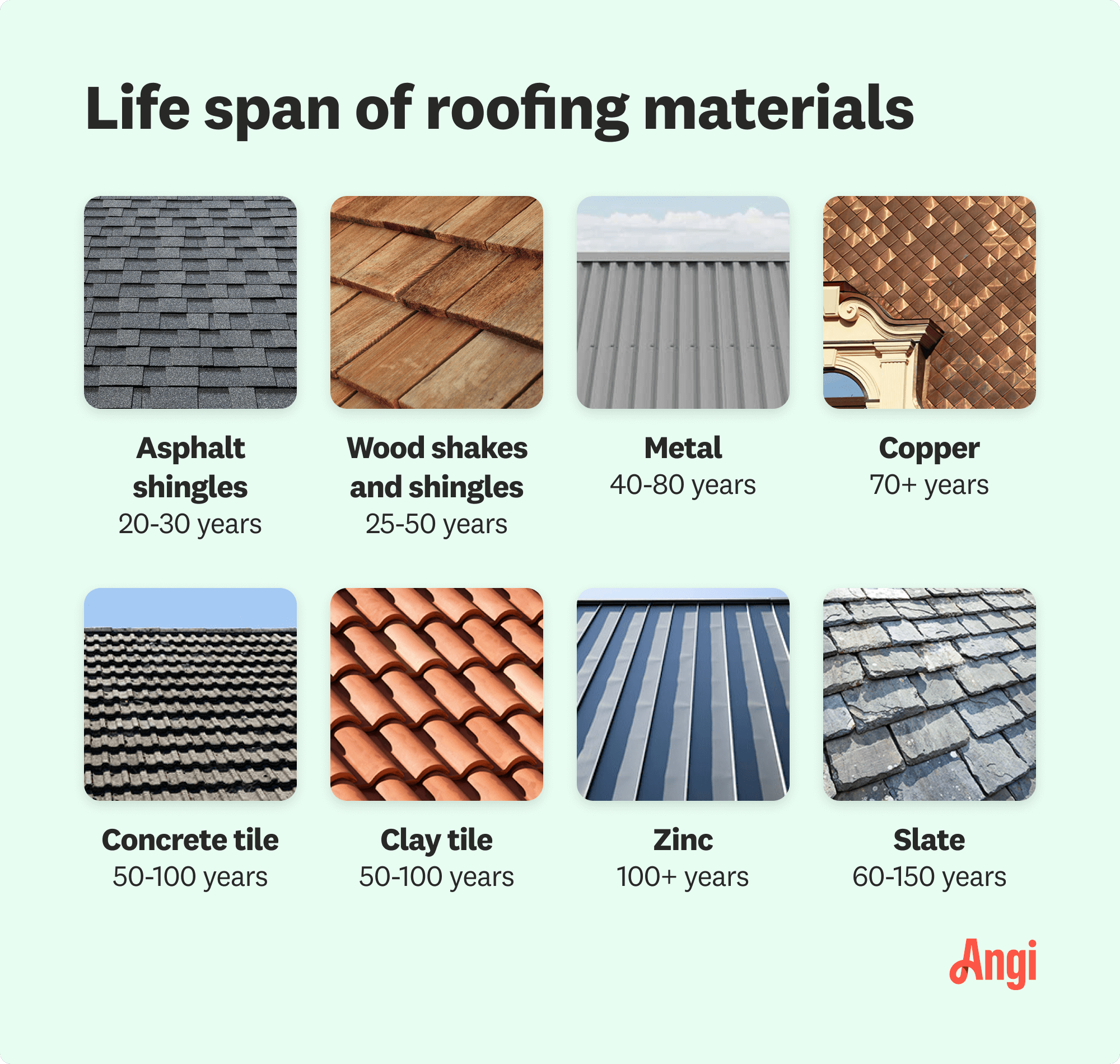How to Find Out Who Installed My Roof and Why It’s Important
Age your roof accurately


Your neighbors or the previous owners may remember the replacement date.
You may need to ask local government entities for help.
Knowing the age of the roof helps you figure out a replacement schedule.
If you live in a home with previous owners, you may wonder when your roof was installed—and who installed it. By accurately aging your roof and knowing its origin, you can estimate when you need to replace it. Learn how to find out who installed your roof, and when they did the job.
Steps to Take to Find Out Who Installed My Roof
You can use several resources to find out who installed your roof, and when it happened.
Visit the Local Building Permit Office
Check with your local government’s building permit office to see whether the previous owner or the repair company pulled a permit to do the last roof replacement. Any roofing permits issued are public record and should identify the contractor who installed the roof.
Ask Your Neighbors
Check with your neighbors about whether they remember the last time a roof replacement occurred at your home. Your neighbors also might remember the company that did the roof replacement.
Neighbors could have contact information for the previous owners of your home, so you could ask them directly when the last roof replacement occurred.
Ask Your Insurance Company
Home insurance companies often maintain records of the last roof replacement for the home. If the replacement occurred as part of a storm damage claim, the insurer will have this information.
However, you may not want to ask your insurance company this type of question. Insurers sometimes will increase your rates if your roof is older. They may require you to replace the roof to maintain your insurance coverage. If you ask the insurer about the age of your roof, the company may start investigating and change your rates or policy accordingly.
Connect With a Local Roofer
You can connect with a local roofer to assess the condition of your roof and estimate its age. A roof inspection costs an average of $235, but you may pay more or less depending on the roof’s design and size.
Importance of Finding Out When Your Roof Was Replaced

By contacting resources to find out who installed your roof, you can determine the last time it was replaced. With this information in hand, you can estimate its age.
Older roofs will not fully protect your home. The layers in older shingles separate and curl, increasing the chances of leaks. Roofs may start to sag as they age, leading to low spots where water collects, increasing the possibility of rot.

Having an accurate age for your roof could help you avoid paying for the cost of a full roof replacement when it isn’t entirely necessary. If you see some damage but the roof isn’t very old, it may be more effective to take on the cost to shingle the roof with repairs just in the areas of damage.
Homeowners should look for a lifetime warranty that comes standard with the roofing product and be sure to read the fine print to learn specifically what the warranty covers.
- Michelle Burson, Vice President of Marketing at DECRA Metal Roofing
Frequently Asked Questions
A roof’s life span depends on the materials in use and on the quality of the work from the roofer. Most roofs will last anywhere from 25 to 50 years. Damage from storms or seeing signs of a bad roofing job could lead to a shorter life span, though.
After you take steps to determine when your roof was last replaced, you may realize you need a new one. Hiring a roofing contractor you can trust involves asking for references and examples of past work. Verify any qualifications the roofer provides. Ask about the expected time to complete the work and about putting guarantees in writing.
If your roof is nearing the 20-year mark in age, you probably should start worrying about the roof’s longevity. If you don’t know the age, it may be time to figure out who installed your roof, so you can estimate the age accurately. You then can make plans to pay for the upcoming roof replacement. You also can learn how to inspect a roof yourself to look for signs of damage that may indicate a need for a replacement.
If your resources for figuring out who installed your roof show that it is nearing the end of its expected life span, try to schedule a new roof installation for the fall. Autumn offers comfortable temperatures, and you will likely avoid the stronger storms of spring and summer that could immediately damage your newly installed roof.





- Roofers
- Metal Roofing
- Roof Repair
- Roof Inspection
- Vinyl Siding Repair Contractors
- Flat Roofing Companies
- Commercial Roofing
- Emergency Roofing Companies
- Leaky Roof Repair
- Metal Roof Repair
- Business Roof Repair
- Flat Roof Repair
- Tile Roof Repair
- Slate Roofers
- Rubber Roofers
- Roofing & Siding
- Metal Roof Installation
- Affordable Roofing
- Roof Sealing
- Attic Ventilation Contractors










